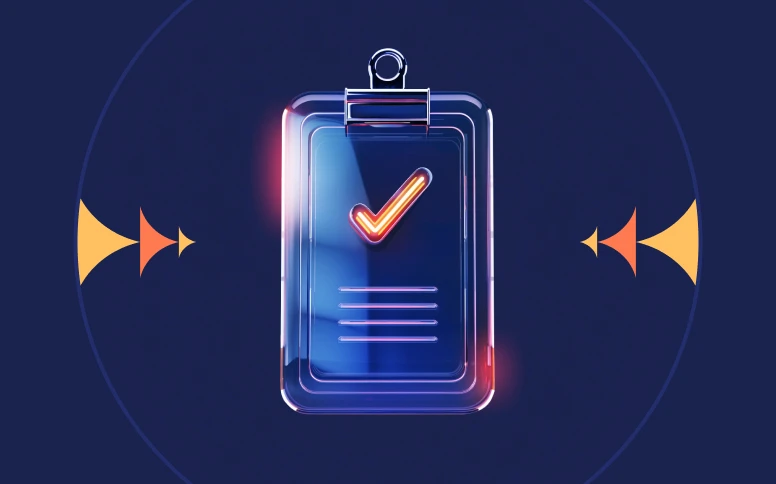Key Components & Best Practices for Winning Sales Proposals
In this article, we’ll dive into the key components and best practices for creating persuasive sales proposals that will captivate your clients and seal the deal every time. From grasping client needs to delivering personalized solutions and pricing transparency to social proof, we will look at ways to craft persuasive and compelling proposals.
Understand the Purpose of a Sales Proposal
Before we get started, let’s first look at what exactly a sales proposal is and what it is meant to achieve.
A sales proposal is a formal document that pitches products or services to prospective or current clients. Its purpose is to persuade the client that your product or service perfectly addresses their specific needs and challenges. You want to convince the potential client that you have the answer to their problem. When done right, a sales proposal conveys empathy and demonstrates your understanding of the client’s sore spots as well as your willingness to help.
We suggest that you consider the key components to make sure that you effectively communicate your value proposition to potential customers when you generate sales proposals.
Key Components of a Winning Sales Proposal
A winning sales proposal should be simple. It is not the first or last interaction with a client, so avoid unnecessary complexity. Make every word count. Don’t provide a long list of features (though they might be impressive), but emphasize how your solution is going to benefit your client and provide a return on investment (ROI).
While using proposal templates can maintain consistency and streamline the process, be sure to personalize your proposal. Tailor a template to the specific client and their unique situation. Templates are great time savers but avoid recycling generic templates. Show that you genuinely made an effort to understand your prospect’s needs.
Use clear formatting, concise language, and professional designs but don’t overload it with details. When suitable and if it adds value, incorporate high-quality charts, graphs, and images. Make proposals structured and don’t forget to use lists.
Typos and grammatical errors create a negative impression. So, proofread the proposal carefully and consider having a colleague review it as well. You can also use AI to check your texts or rewrite to make it more formal.
In addition to the components that will be discussed in detail in the following sections, you can also include the following components in your sales proposal:
-
Executive summary: This is a concise overview of the entire proposal where you highlight the client's sore spots, solutions, and the expected value proposition. Think of it as a super-short pitch for your offering where you briefly refer to your unique selling point.
-
Introduction and company information: This briefly introduces your company, its experience, and its reputation. You can include awards or recognitions here. You’ve earned those bragging rights!
Client Needs Analysis
Your ultimate goal is to identify the client’s specific challenges and aspirations. To do this, you must analyze industry trends relevant to your client’s business and identify the areas where your products or services can add value. This information forms the foundation of your sales proposal.
Ask your client open-ended questions to uncover their specific needs, such as:
-
What problems are they trying to solve?
-
What goals do they want to achieve?
-
What are they looking for in a service provider?
-
How do they measure success?
Feel free to ask additional questions. The better you understand their situation, the more effectively you can tailor your proposal.
Proposed Solution
So, you've done the needs analysis and now it's time to propose a solution that is going to tackle your client's challenges and improve their situation. Here, you will give a clear outline of how your products or services align with their needs. Your goal is to demonstrate that you understand their position and are committed to solving the issues.
There isn’t a one-size-fits-all approach. You must clearly illustrate the ROI of your solution. Show how the unique benefits of your product or service set your solution apart from competitors.
Unique Selling Point
Proposal is your chance to shine and show the one thing that makes you stand out. This could be a specific feature, technology, or approach that sets you apart from competitors.
Where possible, back up your claims with hard data and statistics, for instance: For example, instead of saying, "We offer amazing massages," rather say, “Serenity Spa goes beyond just massages. We offer a holistic wellness experience, combining personalized treatments with mindfulness coaching and on-site yoga classes, all designed to help you achieve lasting rejuvenation and reduce stress levels by 30% within a month.”
The goal here is to differentiate yourself from competitors and to convince your client that you are worth it. Don’t be shy to briefly compare your offering to that of a competitor to show why you are the better choice.
Remember, your unique selling point isn’t just a tagline - it’s the essence of why customers should choose you over others.
Scope of Work
Now, let’s talk about the scope of work. This includes a description of the main goals and desired outcomes. Remind the client how you are going to solve their problem. Then, provide a list of the tasks, activities, and deliverables that form part of the proposed solution. It can be in the form of a bulleted list.
For example, if you're designing a website, deliverables might include the following:
-
sitemap and wireframes;
-
design mockups for key pages;
-
functional prototype;
-
website launch..
Add a high-level timeline that describes the major phases of the project and marks the points when deliverables are expected to be ready.
It is also a good idea to list any exclusions, such as products or services that are not included in the proposed scope of work. This will help to avoid misunderstandings and possible future disagreements.
Proof of Concept or Case Studies
Your goal is to show some solid evidence and validation that proves how effective your solution is. You can do this by sharing examples of how your product or service has helped similar clients in the past. These success stories help build credibility and trust with potential clients.
When your clients see real-life, measurable results from similar businesses, it will boost their confidence in your offerings. Other clients’ success becomes proof to new clients that you are indeed the best solution out there.
Implementation Plan
This is where you provide a detailed roadmap of how you are going to deliver your product or service to the client. You can have the following subheadings:
-
Timelines: Establish a realistic timeline and, if necessary, break it down into milestones for easier understanding.
-
Milestones: These are specific points along the way where we can check in. Here, you include the completion of certain tasks, deliverables, or approval points.
-
Task and activities: List the tasks and activities that will be done as part of the delivery.
-
Dependencies: Identify any dependencies between tasks or activities to ensure that the tasks are done in the correct order.
-
Resource allocations: Provide a list of the personnel, equipment and/or materials that will be allocated to the project.
-
Communication plan: Communication is a key to success. Describe how you are going to stay in touch throughout the project, how updates and reports will be done, and who the main points of contact will be.
-
Quality assurance: Here, you list how the product or service will be tested to ensure the top-notch quality.
-
Training and support: If your solution requires training, provide a detailed plan for that too.
Your implementation plan is a clear sign of your commitment to the project.
Pricing and Terms
Your goal is to clearly outline the cost of your product or service, as well as any terms and conditions that apply. Communicate the value that the client is going to receive in exchange for their investment, and be open to negotiation if necessary.
As transparency builds trust, you should be upfront about any additional costs or fees. This will avoid any nasty surprises later in the sales process. If possible, offer different pricing options and let the client choose the package that fits their budget and needs the best.
Visual Elements
You can jazz up your sales proposal with some visual elements. Whether you use a Gantt chart to show the timeline or flow charts, graphs, and images to illustrate your unique selling point, be sure to add visual elements to make your sales proposal more captivating. They can illustrate key points, break up large chunks of text, and present complex information in a more digestible and engaging manner.
You can also represent a work breakdown structure or case study results by using data visualizations for a more impactful presentation. Just make sure to use professionally designed elements. Visuals should contribute to the overall professional look of your proposal. Don’t just add images for the sake of images.
Risk Mitigation Strategy
Let’s talk about how to manage risks! The risk management strategy can form part of the Implementation Plan section, or you can have a separate paragraph that clearly outlines the measures and actions that you are going to take to identify, assess, and minimize potential risks associated with your proposed solution.
The key here is to show that you are proactive when it comes to managing risk and to provide evidence that you will address any challenges when they arise. This will demonstrate that you are committed to delivering the project successfully, even in the face of uncertainty.
Call to Action
Now we get to the important part of the sales proposal: the Call to Action. This is where you wrap things up and encourage the client to take the next step. Whether it's signing a contract, scheduling a meeting, or requesting a demo, make it easy for the client to move forward with the deal.
A strong call to action can help create a sense of urgency and increase the likelihood of closing the sale. Your goal is to clearly describe what the client should do to accept the proposal and hammer out a deal.
Other Important Notes on Sales Proposals
Here are two additional crucial aspects to consider when you are crafting winning sales proposals:
Use Client-Centric Language
Put yourself in your client’s shoes. Use language that resonates with them, and that focuses on their objectives, needs, and requirements. Stay away from jargon and, especially, avoid using confusing internal company or even industry terms and abbreviations. Your language should clearly show your deep understanding of your client’s situation as well as highlight the benefits of your solution.
Let’s look at an example that illustrates the difference that a subtle change can make. Instead of saying,
"Our software boasts cutting-edge AI features that deliver superior performance and unmatched accuracy,"
you could say,
"Imagine how much smoother your workflow would be with our AI-powered software. You'll experience a significant boost in efficiency and data accuracy, allowing you to focus on what really matters - growing your business.."
These sentences focus on the benefits that the client is going to experience and how it is going to solve their problems rather than just talking about your company's product and its technical features.
Your language should demonstrate empathy and position you as someone who is genuinely interested in solving your client's problems. Make it all about them!
This is how you achieve client-centric language:
-
Focus on “You” and “Your”: Frame the sales proposal around the client’s challenges, goals, and desired outcomes. Instead of saying, "Our software offers advanced features," rather say, "Our software will help you streamline your workflow and increase efficiency."
-
Describe their problems: Don’t be afraid to mention the problems your client is facing. Acknowledge their frustrations and present your product or service as the solution.
-
Highlight benefits over features: Show how the features translate into real benefits for the client.
-
Avoid technical jargon: Unless the client is highly technical, avoid industry jargon or complex terminology. Use clear, concise, and easy-to-understand language.
By crafting a well-written and personalized proposal that showcases the value you bring to the table, you'll not only capture the attention of your potential clients but also establish credibility and trust.
Have a Follow-Up Strategy
Do you have a plan for following up on your sales proposal? You definitely don't want it to get lost in someone's inbox and forgotten. Check out these suggestions to keep the momentum going:
-
Follow up with the client a few days after you have sent the proposal. This can be a call or an email.
-
When reaching out, be sure to personalize your follow-up messages based on your previous interactions. You can even follow up more than once, but respect their time challenges. Be persistent but not pushy.
-
You can also provide additional information or resources, like case studies, to address their specific needs.
-
In your follow-up messages, be clear about the next steps, whether it is scheduling a meeting or signing the contract.
You can automate processes to help you with this.
Elevate Your Sales Proposals for Success
In a nutshell, boosting your sales proposals for success requires a strategic approach. It’s all about showing your true understanding of your target audience, providing a tailored solution that addresses their specific needs, and showing your value proposition in a clear and compelling way.
So, by incorporating these key elements, as outlined in this article, you can take your sales proposals to new heights.
A winning proposal should include:
- Compelling Executive Summary
- Clearly Defined Value Proposition
- Demonstrated Understanding of the Client's Challenges
- Detailed Project Timeline and Deliverables
- Transparent Pricing Structure
- Strong Call to Action
Here's how to craft a winning value proposition:
- Focus on Benefits, Not Features: Highlight the positive outcomes your solution creates for the client, not just its technical aspects.
- Quantify Your Impact Whenever Possible: Use data, metrics, or case studies to showcase how your solution has helped similar clients achieve specific results.
- Differentiate Yourself From Competitors: Explain what sets your offering apart and why it's the best choice for the client's needs.
Here are some tips for formatting your proposal:
- Keep it concise and visually appealing: Use clear headings, bullet points, and white space to break up text and make it easy to scan.
- Use professional fonts and consistent formatting: Maintain a polished look throughout the document.
- Include high-quality visuals: Charts, graphs, and images can enhance understanding and add visual interest.
- Proofread meticulously: Ensure there are no typos or grammatical errors that could detract from your professionalism.
Here's how to effectively follow up after submitting your proposal:
- Send a thank-you email: Reiterate your interest in the project and express your availability for questions.
- Schedule a follow-up call: Reach out after a reasonable timeframe to discuss the proposal and address any concerns.
- Provide additional resources: If relevant, offer additional information or case studies that further demonstrate your value.
- Be persistent but professional: Follow up consistently, but avoid being overly aggressive or pushy.











